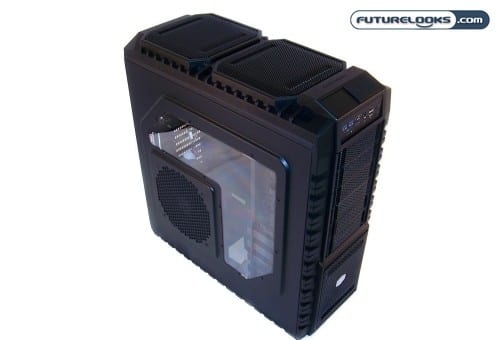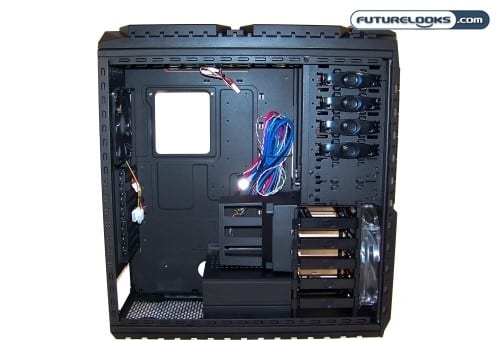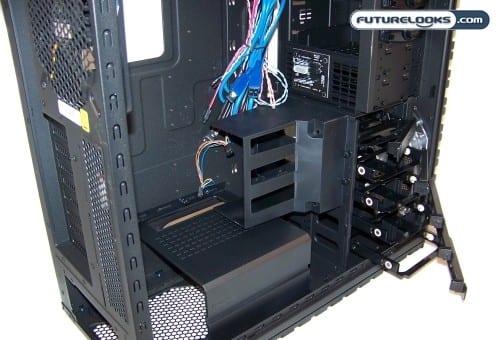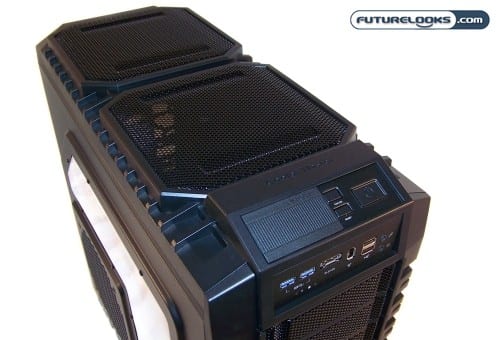
If you recall we recently did a preview of Cooler Master’s new flagship HAF series case known as the HAF X. Our early sample had some minor things to clean up and Cooler Master has taken our feedback to heart and come back with a production unit for us to beat up. We’re back with the final thermal testing results and confident we can provide you with accurate results of our experience with the HAF X enclosure. Like the conclusion to a cliff hanger, we bring you our findings!
A Quick Installation Update

We’re happy to report that any possible chassis component issues in our preview case were promptly addressed. While we noted that the plastic PSU cover tends to bind a little when sliding, it does get a little easier if you work it back and forth a bit. Plus, users can simply take it out and won’t cause temps to go up in your case. Just make sure you orient the PSU fan towards the bottom.

And, that large black plastic VGA retainer will come in very handy if you’re using the larger NVidia and ATI cards. I tried it out with the legendary HOT 8800 Ultra, a GTX 470 a GTX 480, the ATI HD 5870, and one very large ATI HD 5970. The great thing about the VGA shroud is that it can also be taken out if you don’t need it at all or if it doesn’t suit your needs.
Overall, it’s definitely a very configurable enclosure and with all the room, you have no excuse but to be able to tidy up your messy cabling. The Cooler Master HAF X is indeed in full launch mode and has been hitting the market at $199 US at places like NewEgg.
Test System Setup

This test system was created with the purpose of generating plenty of heat and noise and will become the basis of our long term case testing system. These components all have stock coolers and components so that we can deliver better real world results. Chances are that you will experience the same things. Here’s the break down of this new long term torture test system:
- Processor: AMD Phenom II X4 965 Black Edition AM3 CPU (140W version)
- Motherboard: ASUS M4A89GTD PRO/USB3 AM3 Motherboard
- Memory: Patriot ViperII 4GB 2000MHz DDR3 Dual Channel Memory Kit
- Graphics: eVGA 8800 Ultra 768MB Video Card
- Storage: 2 x 500GB Seagate 7200.11 Barracuda SATAII Hard Drives
- Power Supply: Antec Signature SG-850 850W ATX Power Supply
Not all the components generate tons of heat. But, the CPU, motherboard, and video card generate the most. They are also the most easily measurable and if either of them fail, the system will become unstable and crash which is why good design is important. The system we assembled for long term case testing is not a thermal friendly system at all, but is representative of some of the hot components we put into a case every day.
Thermal probes from a Zalman ZM-MFC2 Fan Controller were placed on the CPU, the back of the GPU, on the north bridge chip and on the top of the hard drive.
Now it’s time to see what FurMark and OCCT can do to wreak havoc inside the tank like HAF X Full-Tower Enclosure!

